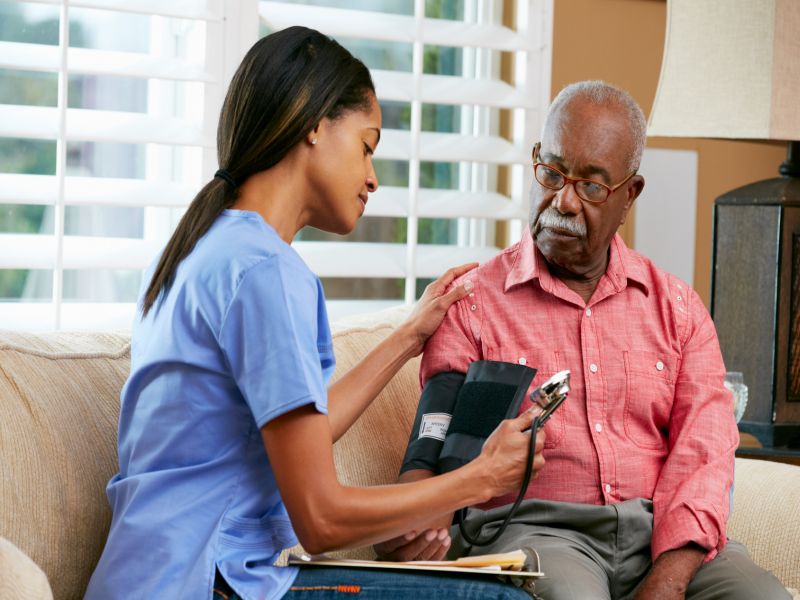Blood Pressure Dips Upon Standing Might Not Be as Dangerous as Thought
 By E.J. Mundell
By E.J. Mundell
HealthDay Reporter
TUESDAY, Jan. 28, 2020 (HealthDay Information) — A widespread situation termed “orthostatic hypotension” — a unexpected fall in blood pressure when standing up — has very long been tied to the possible for risky falls in older persons.
But a new examine implies that medical practitioners who deal with blood pressure in older clients should not fear that their solutions are more dangerous for individuals with the situation.
It “was not connected with a greater threat of cardiovascular illness functions” these types of as heart attack or stroke, explained researchers led by Dr. Stephen Juraschek, from Beth Israel Deaconess Clinical Middle and Harvard Clinical School, in Boston.
In truth, his group also discovered that dips in blood pressure when standing up were not even connected to greater odds for fainting or falling.
The examine did obtain that orthostatic hypotension was tied to a 77% greater possibility for healthcare facility admissions connected to minimal blood pressure, but it did not appear to matter if the patient’s blood pressure experienced been “aggressively” decreased by medications or not.
In other text, medical practitioners should not feel shy about assembly clinical guidelines to aggressively handle large blood pressure — even when clients have orthostatic hypotension, the researchers discovered.
The new investigate was released Jan 27 in the journal Hypertension and relied on data from a main latest trial of thousands of U.S. adults in excess of age forty nine, termed the Sprint trial. That trial served modify clinical observe when it discovered a true well being gain to the intense treatment of clients with large blood pressure.
But as Juraschek and his colleagues famous, doctors have fearful that persons who get “woozy” upon standing up due to a fall in blood pressure may possibly be at greater threat of falling if they are also beneath restricted blood pressure treatment.
The new examine discovered those fears may possibly be unfounded.
Even so, two heart experts who were not element of the new examine imagine more investigate may possibly continue to be necessary.
Dr. Benjamin Hirsh directs preventive cardiology at Northwell Health’s Sandra Atlas Bass Coronary heart Clinic in Manhasset, N.Y. As he defined, “orthostatic hypotension is a better than 20 mm Hg fall in the blood pressure a person moment upon standing, in contrast to the blood pressure when sitting or lying down.”
But Hirsh explained that definition — employed in the new examine — won’t capture all episodes of the situation. For illustration, he explained, “quite a few dangers of dealing with [clients] for minimal blood pressure happen at nighttime, when the affected person arises from extended slumber and then falls. This comes about inside of a person moment of standing — which is technically not ‘orthostatic hypotension.'”
And what if the affected person has other conditions — these types of as diabetes, dementia or a prior stroke? “These clients were being not bundled in the primary Sprint trial upon which this study’s assessment was carried out,” Hirsh famous.
Dr. Michael Goyfman directs clinical cardiology at Extensive Island Jewish Forest Hills Clinic in New York Town. He agreed with Hirsh that when the new results have true worth in guiding treatment, the examine may possibly not have bundled all kinds of orthostatic hypotension.
The examine “could have missed situations of OH that happen inside of the 1st moment, or when altering positions from laying down to standing, as those do appear to be connected with falls and lower blood pressures,” Goyfman explained.
He also famous that the examine did not include things like “non-injurious” falls in its calculation of irrespective of whether or not orthostatic hypotension posed a tumble risk.
“Could it be possibility that makes a tumble injurious as opposed to non-injurious?” Goyfman explained. “What if a affected person fell onto a softer surface area as opposed to a more challenging a person? Arguably, all falls need to be bundled in the analysis…”
Problem
Salt and sodium are the similar.
See Remedy
For now, quite a few doctors may possibly continue to be hesitant to aggressively handle persons whose blood pressure numbers fall when they stand up, he explained.
“I do not feel this will significantly modify current observe till more randomized trials are carried out confirming absence of adverse results from orthostatic hypotension,” Goyfman explained.

Copyright © 2020 HealthDay. All legal rights reserved.
From 
Wellness Answers From Our Sponsors
References
Sources: Benjamin Hirsh, M.D., director, preventive cardiology, Northwell Health’s Sandra Atlas Bass Coronary heart Clinic, Manhasset, N.Y. Michael Goyfman, M.D., director, clinical cardiology, Extensive Island Jewish Forest Hills, New York Town Jan. 27, 2020, Hypertension

